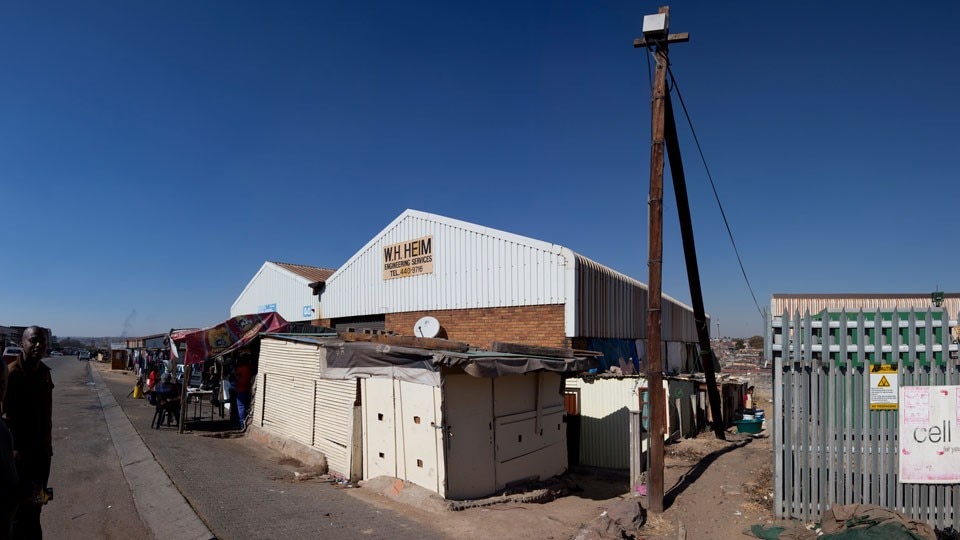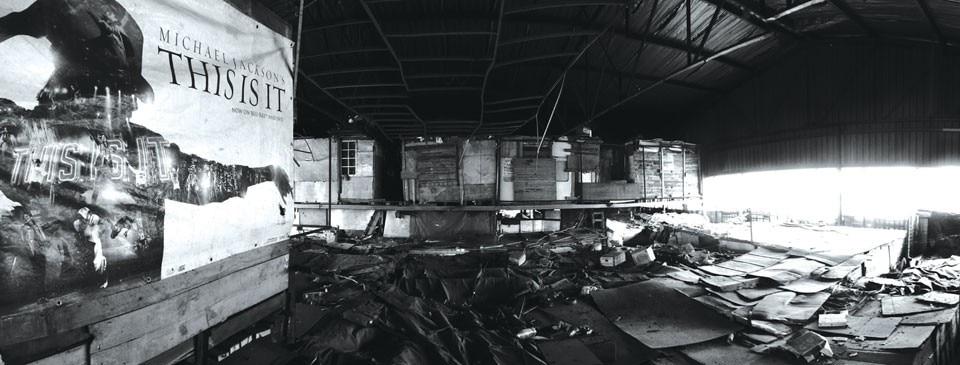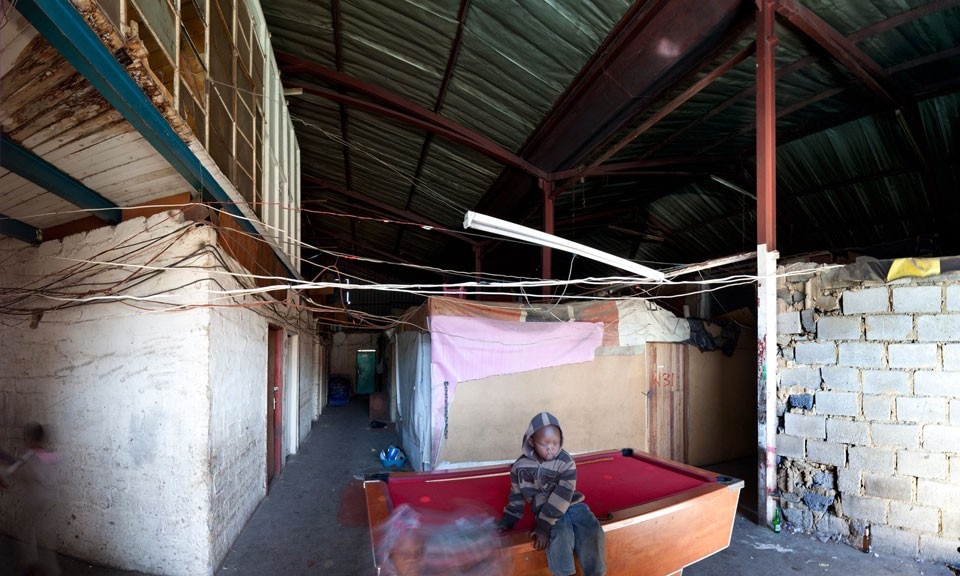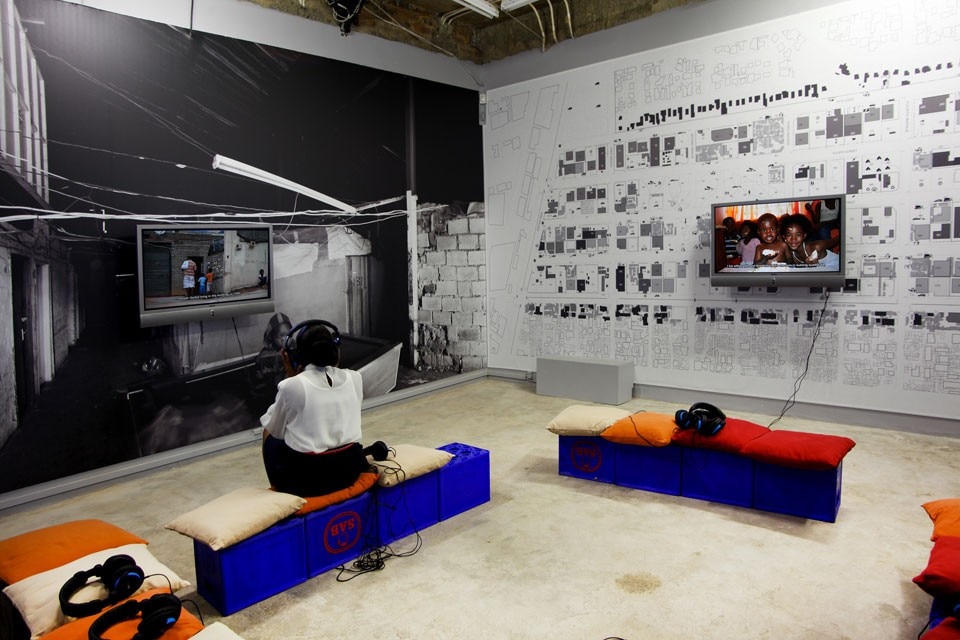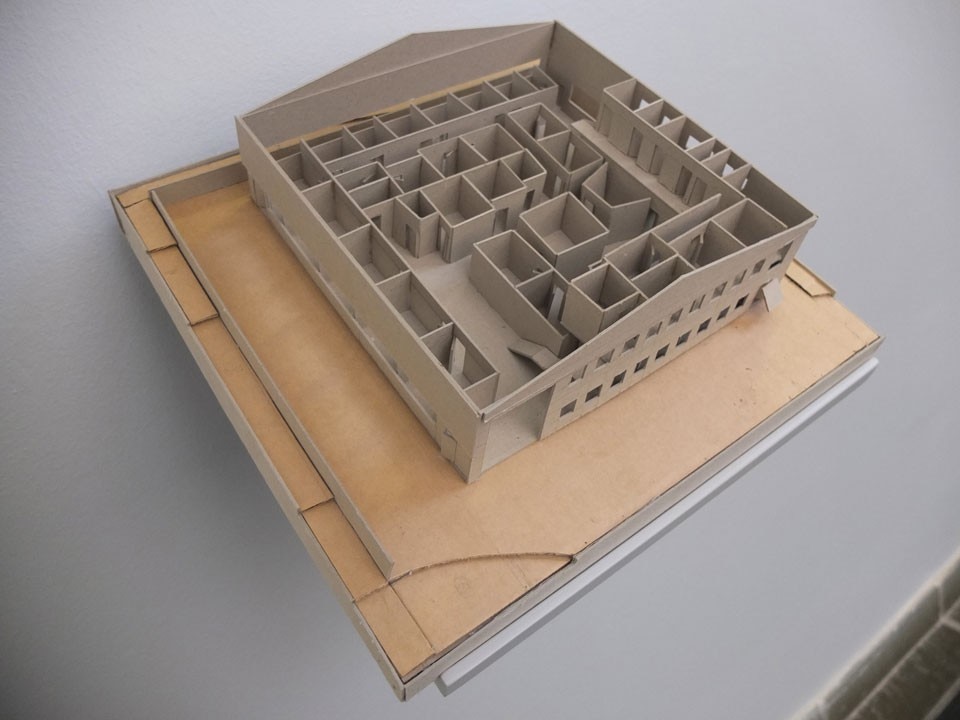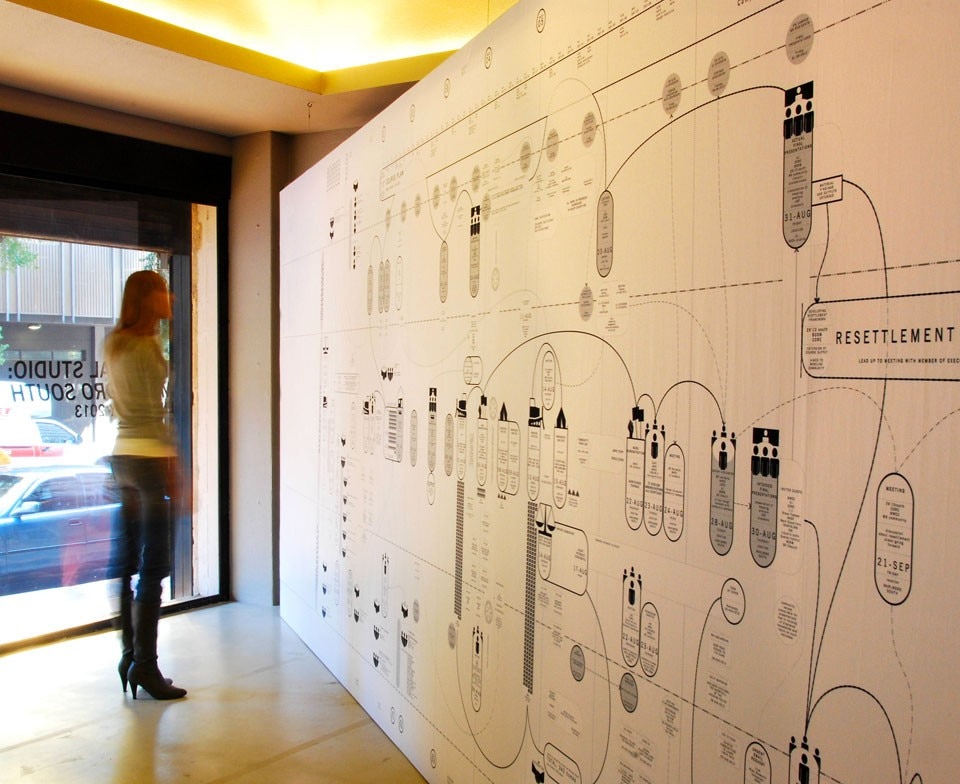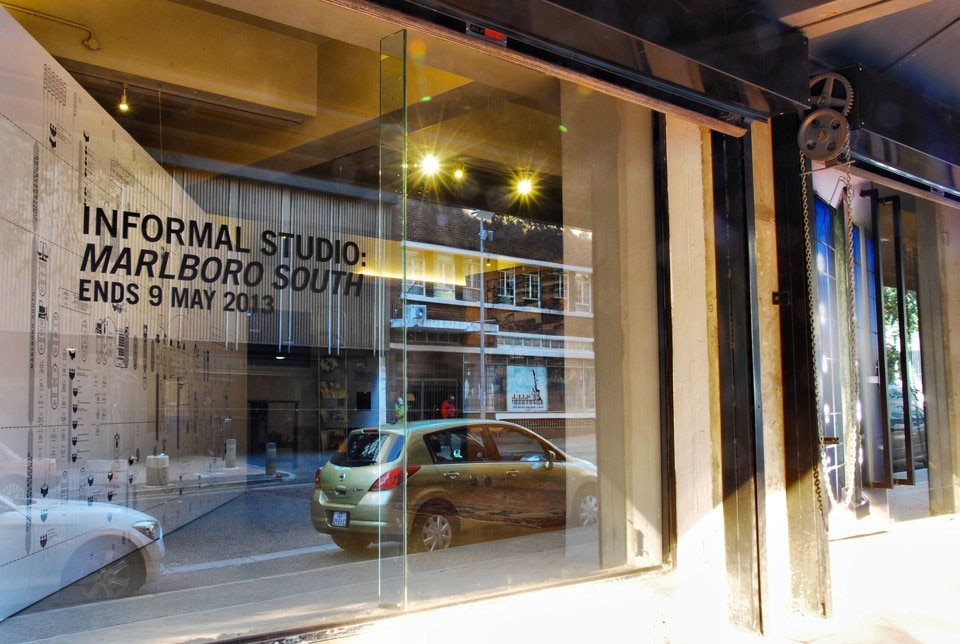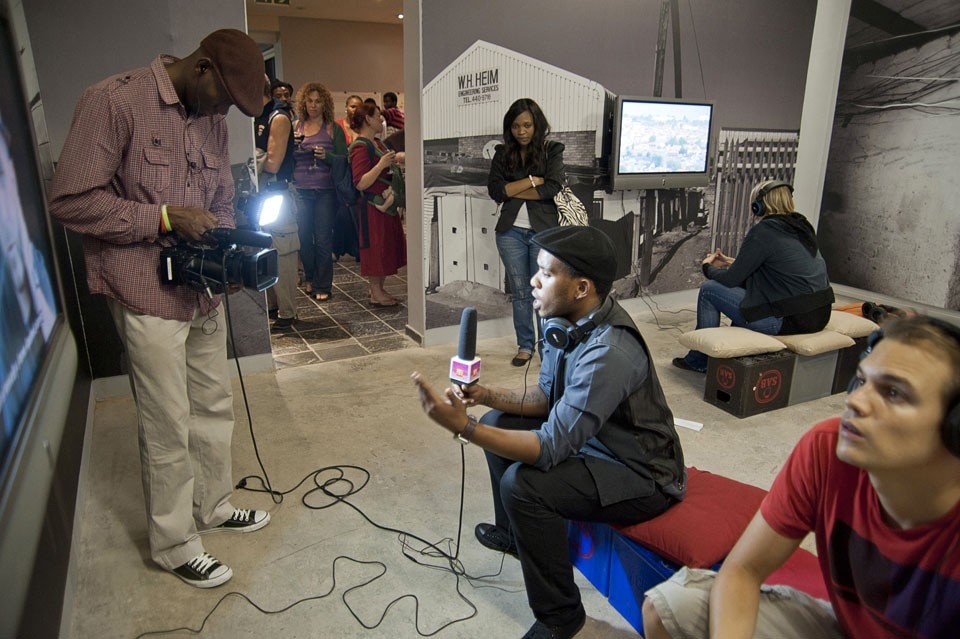The right to housing is a central part, perhaps even the core of the struggle in South Africa. Housing involves not just the right to land, but also the right to settle it securely through time. The measure of victory over the apartheid has come to be quantified in numbers of units of housing released, a number that is never enough and that constantly extends the historical struggle into the present.
The Marlboro South area of tents and occupied factory sheds looks like a refugee camp. It is effectively that —a temporary zone for displaced residents of the Alexandra township which, as one of the few well located pieces of land in Johannesburg, is the very theatre of the struggle and its fallout. Every piece of vacant land is subject to invasion, every resident drawn into an identification with some community in whose name leaders will stake claims and, occasionally, score some victory in the form of upgraded public amenities, title deeds or, incredibly, new dwellings.
